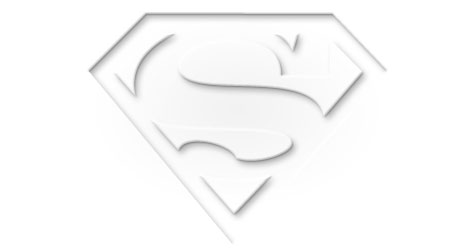Superheroes are anthropomorphized brands. For good sake they have logos on their chests! The Batman symbol (and sometimes the Superman crest) is consistently on the 20 more recognized symbols in the world. Superheroes have messages, followers, fans and they make money. They are brands. And they have it right! They are tapping into the human nature to crave behaviour changing information conveyed through dramatic storytelling. And they are forging relationships by meeting us as people through characters. Two things the best brands and advertising agencies only try to approximate. Now let’s take some lessons in branding from masters like Stan Lee, Grant Morrison, Christopher Nolan, and more:

Consistency in message
Superheroes have been espousing the same messages for their entire “careers.” Justice for all. With great power comes great responsibility. An individual can make a difference. Sacrifice for the greater good. Fight for equality in the face of prejudice.
We grew up with the messages. We learned these messages when we read, tuned in our, better yet, played as our favourite heroes. We lived these messages. These messages are all at the heart of the super hero brands we know. They are both their reason for being as well as what has sustained their longevity.
It is because they’re consistent. We see so many companies that re-invent themselves in new business climates. We see so many advertising agencies change a brand’s message after winning a RFP. But these changes are not how to build a brand.
Consistency in message is how to build a brand. It’s not sexy. It’s not glamorous. It doesn’t win awards. And it can give the false impression of being stale and boring (Superman’s brand had fought this perception, but endures.) Walmart and Batman may not have a lot of things in common, but they both have told their market / audience exactly what they are all about from day one.
Consistent graphics that freshen
I always espouse that a bad looking brand used consistently is more effective than a good looking brand used inconsistently. But Superheroes change their costumes, and it’s heard to ask companies to not change their spandex as well. Styles change, tastes change, society changes. The people who are the superheroes change themselves! But you can bet that it is going to be 70% the same, and you know for sure that that symbol on their chests is going to stay the same.
Let’s be clear here. Superheroes may change their costumes only once a decade, and companies should to. And even those changes are incremental; the costumes are still 70% of the same. Exactly like a companies brand, a superhero’s costume is his face to the world. Change it too much, and he / she will not be recognized. And if you loose recognition than you loose the relationships you had previously with the audience. Their have been some spectacular failures in superhero costumes that have been reverted back (the best and worst superhero costume changes). But in the comic world, reverting back is a couple of issues. In the business world, reverting back means millions of dollars in media, effort and opportunity cost. Stay consistent, but freshen with the times.
Have a story. Stories travel
What planet did Superman come from? What was special about the spider that bit Spider-man? What type of street were Batman’s parents killed? I know you knew that the answers were Krypton, radioactive, and an alley.
Why? Because humans relay information through storey, and we remember stories because of drama. You would be hard pressed to find someone on the street that hasn’t heard those stories after 60 to 75 years of comic books, TV shows, movies or from their friends on the schoolyard or in the office. And they have stayed consistent for over half a century.
There would be no superheroes if their weren’t the human tendency to pass information through storey. Comics are far from the first and definitely won’t be the last to use this tendency. Greek myths are full of information, morals and lessons to live by, told through parable. Some are extremely deep. And, less that coincidentally, they have super human powers too.
Why do we do this? All memory is emotional and there seems to be a hack to the long term memory to the brain through experiential (and spatial.) We are more likely to remember things when there is an emotion attached to it. For example, you may forget someone’s name, but if you embarrassingly have to ask for it again, you never will forget because their is an emotion attached to it. Also, our short term memory can hold 4-7 chunks of information at a time (this is why phone numbers are 7 digits, and broken up into 4 and 3 number chunks). Information needs to go through our short term memory to place things in our long term memory, but that goes out the window when dealing with experiences (and spaces). People can remember multiple shuffled decks of cards using this hack. If I tell you to remember the number 2371 and tell me tomorrow, you are going to struggle with it. But you will remember it quite easily if I have you imagine yourself walking down a hall and you pass Kate Upton holding 2 melons, president Obama juggling 3 balls, Superman burning the letter 7 in the wall with his heat vision, and Spiderman webbing up 1 crook. Same amount of information, 4 digits, but easier to remember. If this phenomenon interest you, look up the baker / Baker paradox.
Superheroes tap into this memory hack by making the information they are trying to convey have emotion through drama. Thus, we have no trouble remembering things we have heard about them through their stories. If your brand has a story with even a little emotion to it, it will be much more memorable and it will travel faster than The Flash.
People relate to brands as they do to people
If you can understand this lesson, and the previous three will come naturally. People relate to brands in the same way as they do to people. They recognize them visually, they ascribe value, personality traits and emotions to them.
We have evolved (or were designed, depending on your beliefs) to interact with other humans, not companies. As a species, we have spent more time doing commerce with people in markets rather than companies, and learning to use relationships to navigate who to work with or buy from was extremely adaptive. The entire reason for branding in the first place is to bring a company closer to a person so people can have a relationship with it. Very rarely do we form relationships to faceless commodity products. People want to have relationships with other people, which is why marketers are seeing more social media activities around their mascots than their brands. The comic companies are not immune to this either: Batman has 9.9M likes on Facebook, where DC comics as 1.2M and Iron Man has 15.4M likes where his parent Marvel Comics has 5.5M likes.
If you think of your company as a person, you will have no trouble with branding. Why not picture your company as a superhero? What does his or her costume look like? That is your creative. And what is their personality? That is the tone of your copy. What actions is he or she trying to inspire out of society? That is your message. And finally, who is he or she? That is your brand. If you treat your brand like a person, than people will relate to it. Just as they relate to superheroes.
I don’t know if I was attracted to superheroes because they had branding so right, our if I am so interested in brands because they are like superheroes. But either way, I still find them both fascinating. And you should to, because there are parallels and lessons to be drawn between each other. Remember, superheroes are tapping into the human nature to crave behaviour changing information conveyed through dramatic storytelling and they are forging relationships by meeting us as people through characters. Do these things too and your brand will fly like Superman.
